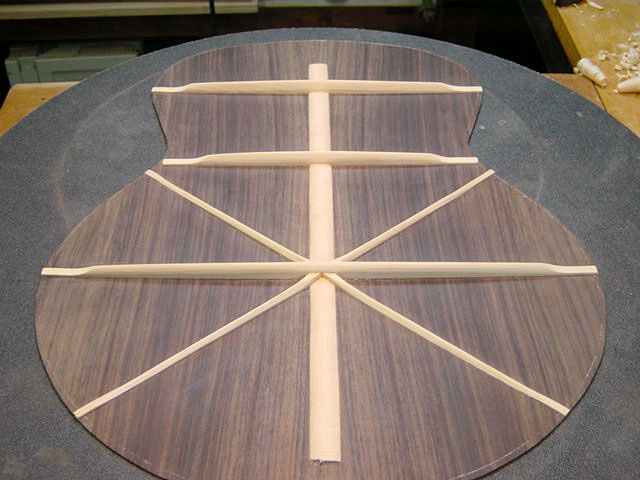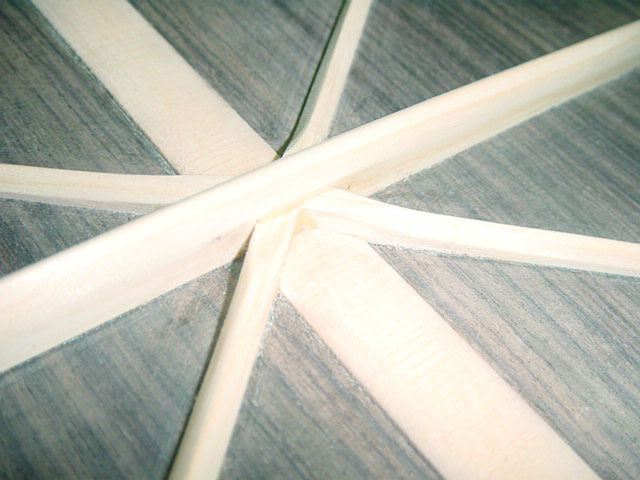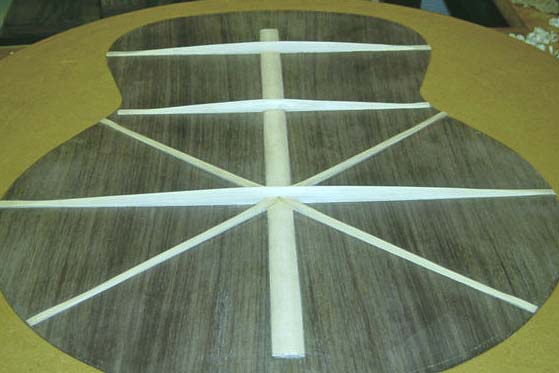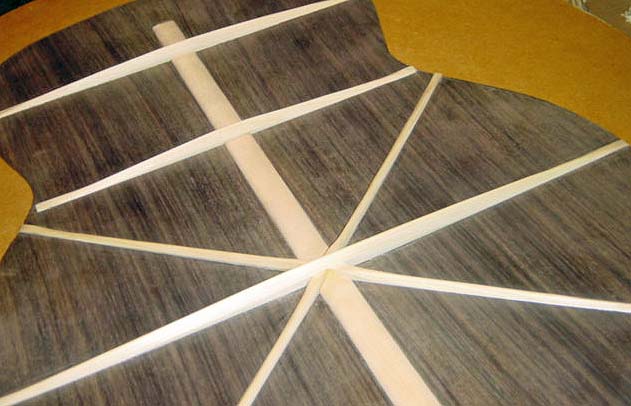Most of you understand already that I am anything but conventional in my way of thinking. So I hope that you can accept that despite those constant and annoying voices in my head telling me in a wide variety of emotional pleas to "Stick to the plan Kim, just stick to the plan, you can fool around all you like later mate but please, please, just stick to the freakin plan." I have managed to ignore them completely and carry on toward the back of the cave. (Bob and Tim would understand
Anyhow here is the bracing pattern I have come up with for the back of my guitar.

As you can see, rather than using lateral finger braces extending from the centre of a more robust X in the lower bout, I was more attracted to the idea of maintaining a more robust traditional ladder brace transversing the widest area of the back and then having a very light "X" to help hold the shape of the dome as it extends out to the linings. It is my intention to feather the legs of the X to 0 just just short of the linings, however I have left enough meat on the end of the legs for now to allow for some further procrastination as required. Your collective advice on weather you think I should tuck the x or not are welcome but may not necessarily be followed
The joint for the X is a traditional half lap at around 90 degree. The lateral brace acts as a more than adequate joint cap as it has been cut with arrow heads fitting tightly into the lateral sides of the X with little tolerance.

Anyhow, it sustains for a very long time when tapped and despite being glued up for a while, it does not seem to move any more than one would expect with changes in RH.
Cheers
Kim

